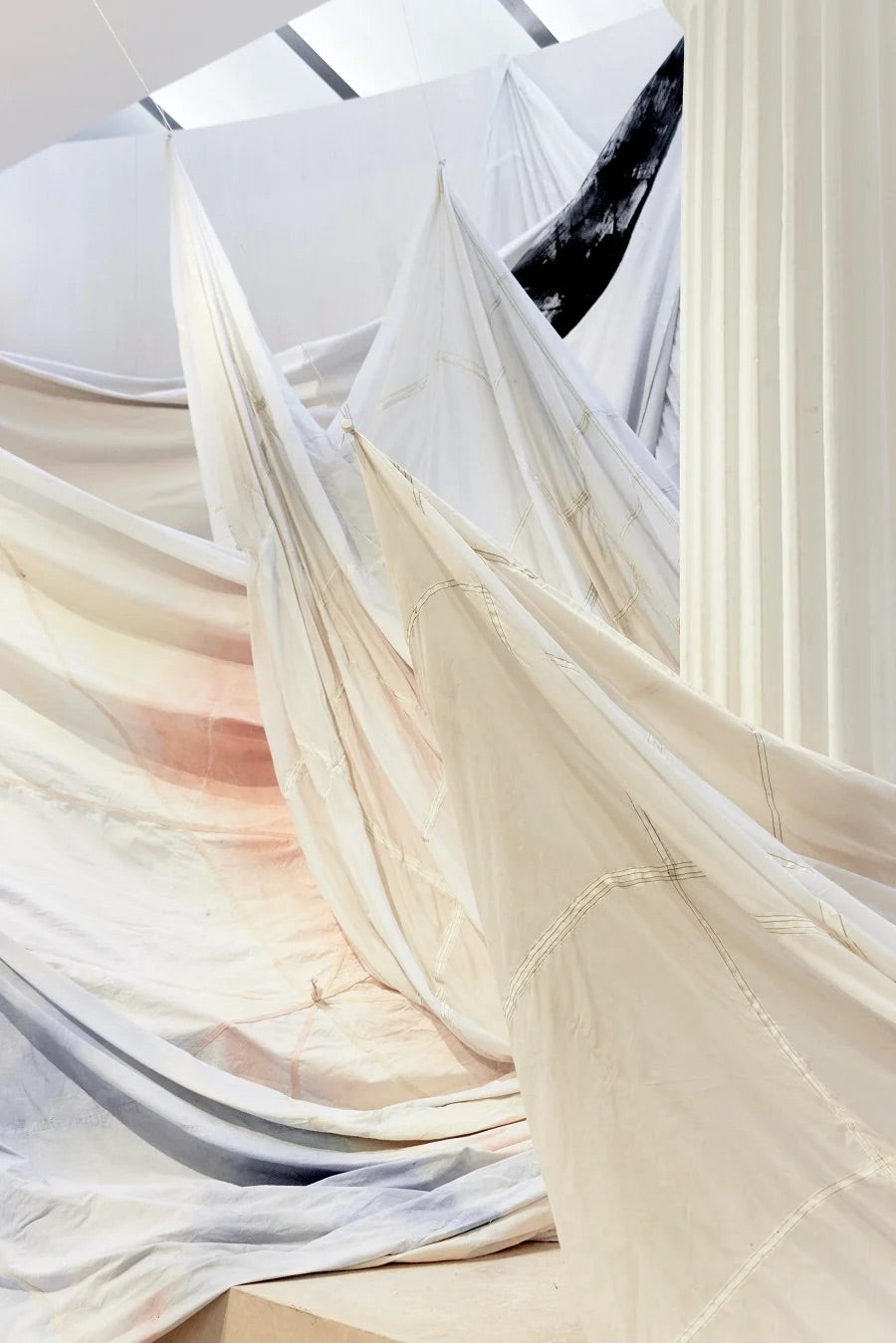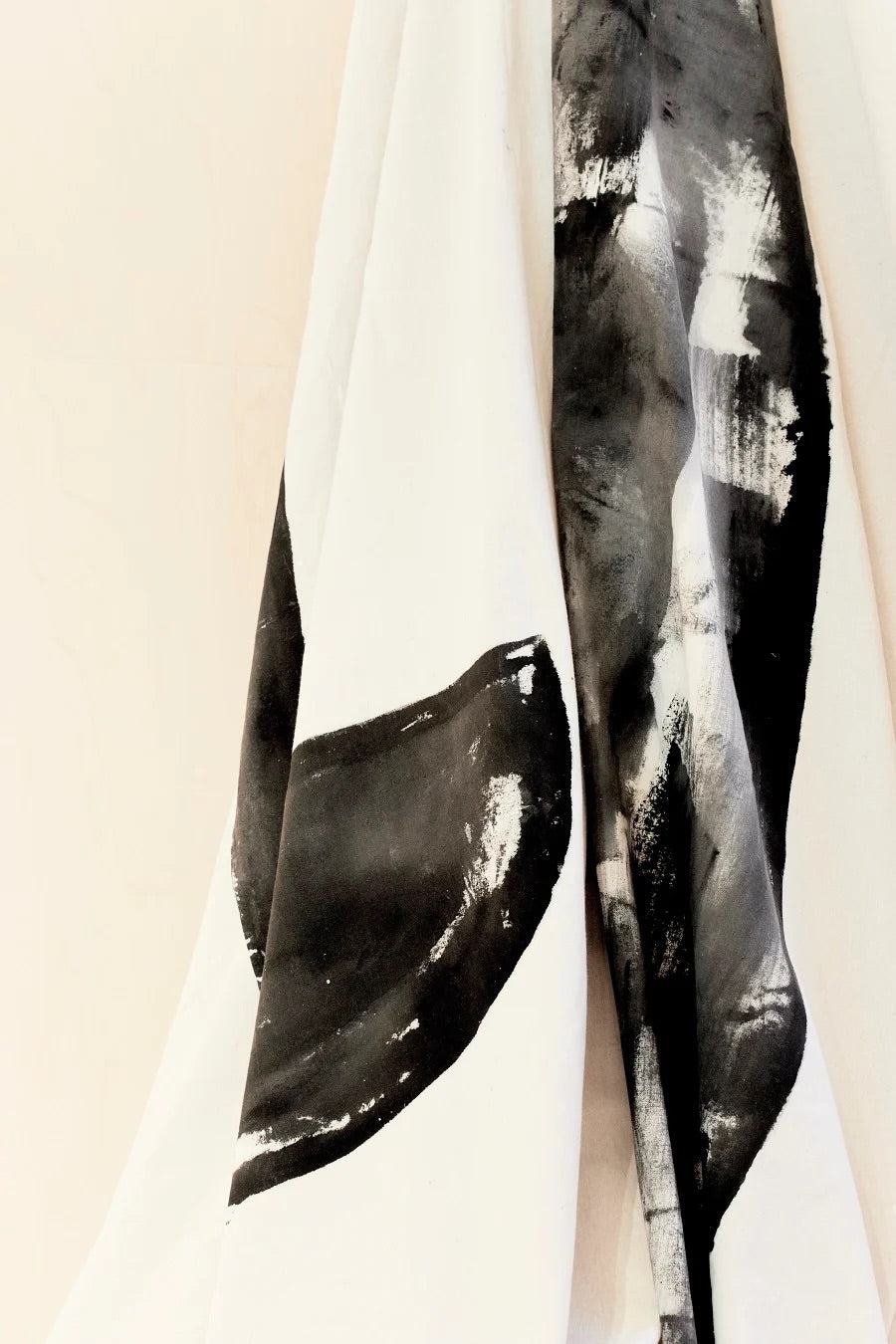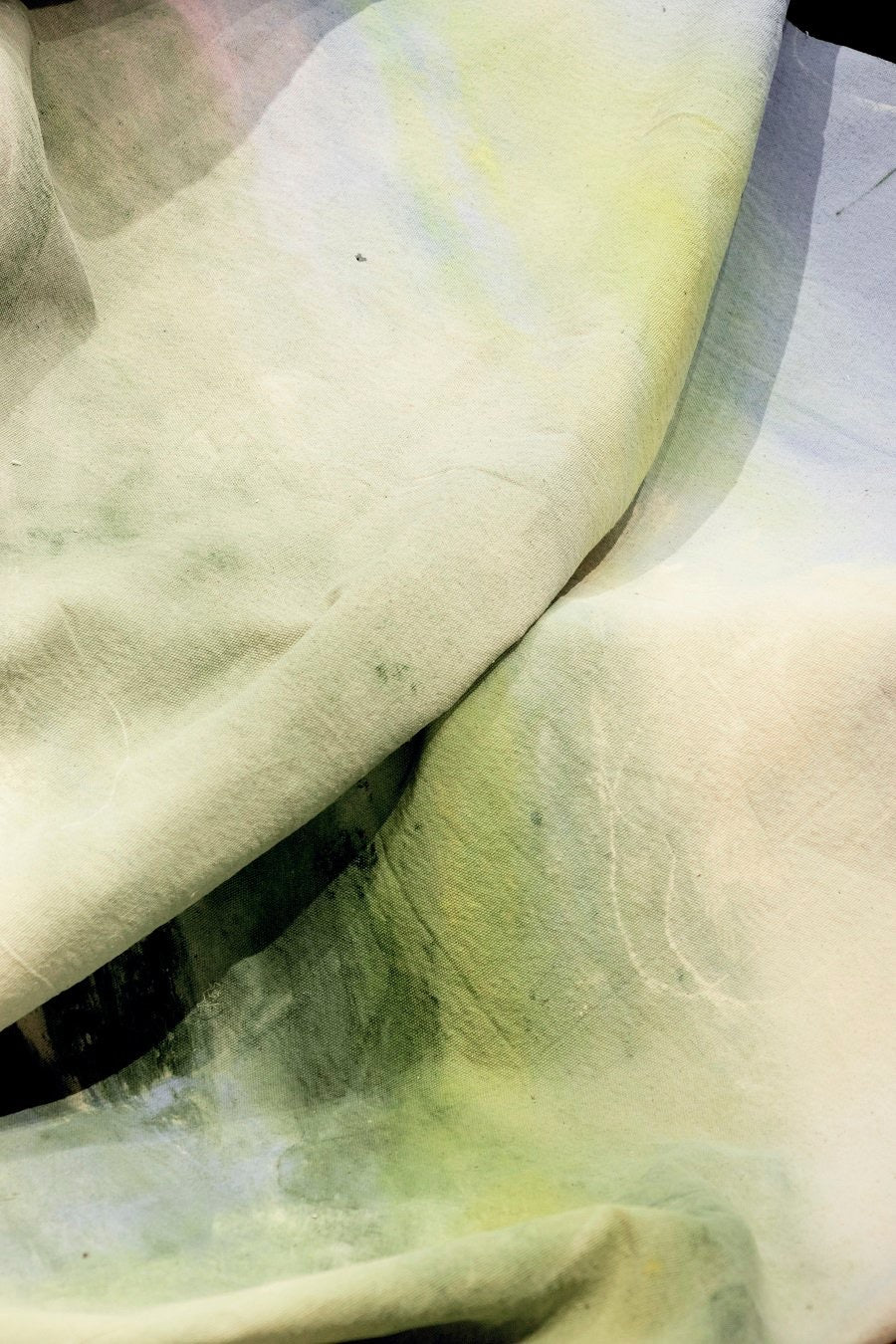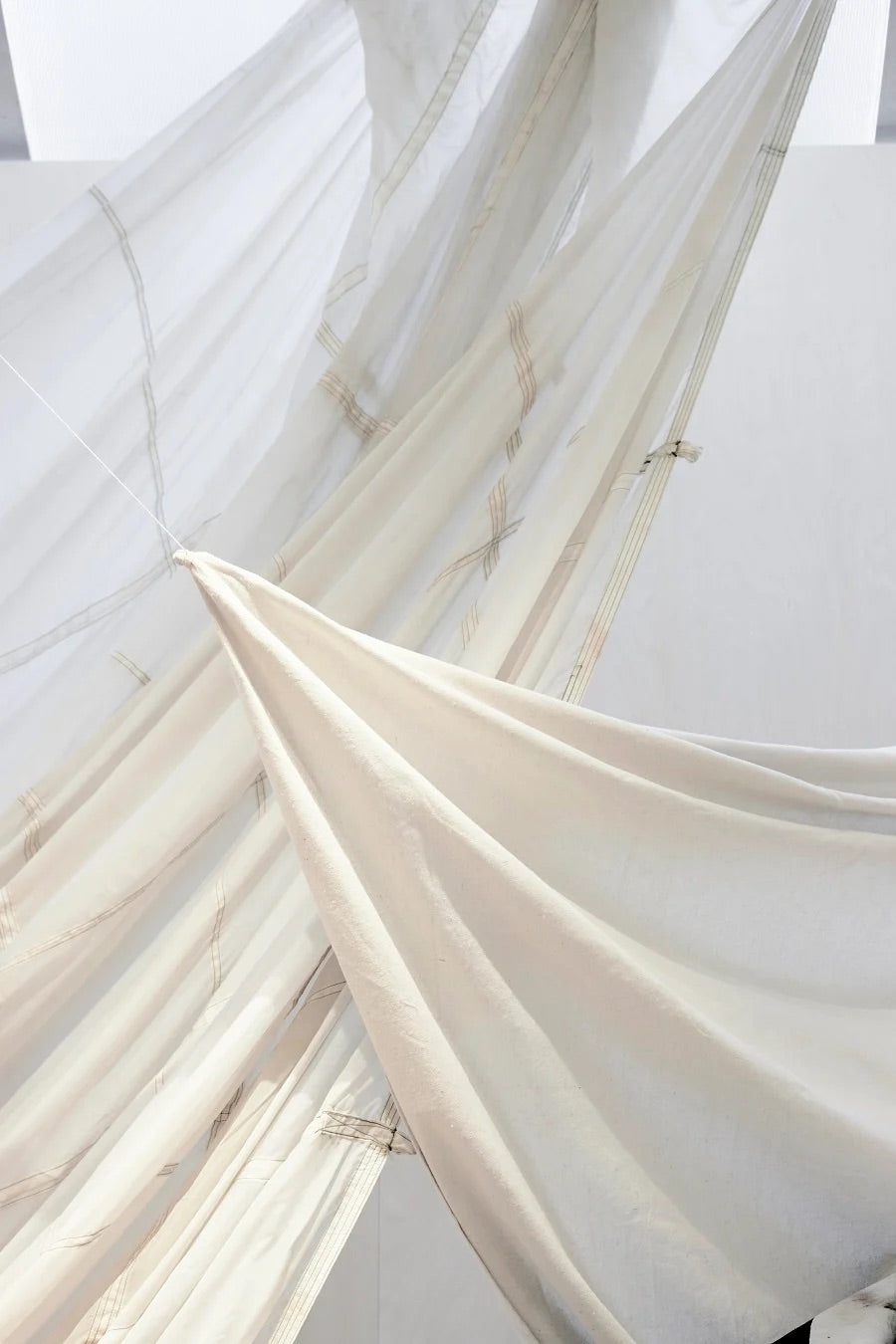Fashion has always been a form of self-expression, but in 2025, personal style is no longer about following trends—it’s about creating your own. Enter 'Chaotic Customization,' a rising movement that embraces hyper-personalization and celebrates individuality through curated chaos. Think hand-stitched patches on designer denim, layered brooches on trench coats, or even scarves repurposed as handbag embellishments.
At the heart of this movement is Gen Z, a generation that values creativity over conformity. For these consumers, customization isn’t just a novelty—it’s an essential part of their identity. 3.1 Phillip Lim has long embodied this ethos through versatile, thoughtful design that invites wearers to add their personal touch. From the iconic Patchwork Moto Jacket to tailored soft suiting, the brand offers the perfect foundation for this trend.
Chaotic customization isn’t about chasing fads—it’s about authenticity, sustainability, and making each piece your own. As consumers look for ways to stand out in a fast-fashion world, they’re turning to brands like 3.1 Phillip Lim that encourage timeless investments with endless possibilities for reinvention.
Defining 'Chaotic Customization'
The term 'Chaotic Customization' was first spotlighted by WGSN, a leading trend forecasting agency, as a response to the growing demand for hyper-personalized fashion. Unlike traditional customization, where consumers choose minor tweaks like color or fabric, chaotic customization embraces radical, unrestrained self-expression. It’s about transforming garments into something deeply personal—through patchwork, embroidery, hand-painting, and even reconstructing pieces from scratch.
For fashion-forward consumers, chaotic customization is a way to redefine luxury by making it personal. Accessories aren’t just worn—they’re curated, layered, and reimagined. Brooches are pinned onto sleek outerwear, handbags are adorned with charms and scarves, and classic tailoring is elevated with unexpected pops of texture or color.
This movement is about intentional imperfection, a concept that resonates deeply with 3.1 Phillip Lim’s brand ethos. The brand’s collections often embrace asymmetry, mixed materials, and raw finishes, encouraging wearers to play with textures, layers, and styling to make each piece feel unique. For example, the Patchwork Moto Jacket already features a collage-like design that invites further personalization, while the brand’s structured yet fluid trench coats provide a canvas for brooches, belts, or embroidered details.
At its core, chaotic customization is about longevity. By encouraging wearers to customize their pieces, the trend naturally promotes sustainability—a principle that 3.1 Phillip Lim has long championed. With thoughtful, versatile pieces, the brand empowers consumers to reimagine their wardrobe season after season, reducing waste and creating garments that evolve over time.
Factors Driving the Trend: Cultural Shifts
In an era marked by global uncertainties, including economic instability and climate crises, Gen Z is turning to fashion as a means of personal expression and control. This generation finds solace in chaotic customization, a trend emphasizing hyper-personalization and individuality. According to Insight Trends World, Gen Z seeks "micro-moments of joy and expression as a means to foster mental well-being," leading them to embrace highly personalized fashion items adorned with accessories like ribbons, pearls, and charms.
This cultural shift aligns with 3.1 Phillip Lim’s philosophy of raw, romantic beauty. The brand’s designs—such as the Patchwork Moto Jacket and soft tailoring with asymmetrical cuts—naturally invite personal interpretation, allowing wearers to infuse their unique style into each piece.
"Fashion is transitioning from 'quiet luxury' to maximalism, with chaotic customization as the core expression of individuality and creativity."
— Insight Trends World
Technological Advancements: AI and Mass Customization
The advancement of AI and digital technologies is making chaotic customization more accessible than ever. According to Forbes, fashion brands are beginning to integrate AI-driven customization platforms that allow customers to personalize their garments online, from choosing fabric patterns to adding custom embroidery.
These tools are revolutionizing the traditional retail experience, shifting the power to the consumer. Instead of settling for mass-produced items, shoppers can now co-create their garments—a process that feels both modern and empowering.
Brands that invest in mass customization technologies can offer their customers a personalized luxury experience that resonates with younger generations. While fast fashion has always relied on mass appeal, luxury brands like 3.1 Phillip Lim are uniquely positioned to combine technology with craftsmanship, offering both quality and personalization.
"Consumers like to have an active role in shaping the products they want, and they are getting more comfortable buying online."
— Forbes
Sustainability Concerns: Reducing Overproduction with Made-to-Order Fashion
In a world increasingly focused on sustainability, chaotic customization offers a more mindful approach to fashion consumption. According to Vogue, made-to-order and personalized fashion reduces overproduction and waste, which are significant contributors to the industry’s environmental footprint.
By encouraging consumers to customize and keep their pieces for longer, brands are helping reduce fashion’s disposable culture. A personalized garment becomes more meaningful to the wearer, decreasing the likelihood of it being discarded after a season.
3.1 Phillip Lim champions versatility and longevity in its designs. The brand’s timeless silhouettes are built to last, and chaotic customization enhances their wearability by making each piece feel fresh and unique season after season.
By embracing chaotic customization, 3.1 Phillip Lim not only aligns with current cultural and technological trends but also addresses the growing demand for sustainability in fashion.
Impact on the Fashion Industry: How Chaotic Customization is Reshaping Fashion
The rise of chaotic customization is pushing fashion brands to rethink their traditional design, production, and marketing strategies. From on-demand manufacturing to consumer co-creation campaigns, the industry is evolving to meet the demand for more personalized, engaging fashion experiences.
1. Design and Production: Embracing On-Demand and Configurators
Customization isn’t just an aesthetic trend—it’s reshaping how clothes are designed and produced. Fashion brands are now adopting configurators (interactive tools that allow customers to personalize products) and investing in on-demand manufacturing systems to reduce waste and better meet consumer needs.
According to McKinsey & Company, on-demand manufacturing can help brands reduce inventory costs by up to 30% while catering to consumers' desire for uniqueness. This approach allows brands to offer made-to-order garments, minimizing overproduction and ensuring that customers receive exclusive pieces tailored to their preferences.
Luxury brands are particularly well-positioned to adopt this model. 3.1 Phillip Lim’s approach to timeless, versatile design already lends itself to customization. Pieces like structured blazers, wide-leg trousers, and everyday bags can be enhanced with personalized embroidery, custom buttons, or unique trims, offering customers a deeply personalized luxury experience without compromising on quality.
"Customization allows brands to stay relevant by offering a more personal experience while also improving sustainability through made-to-order production."
— Business of Fashion
2. Marketing Strategies: The Rise of Consumer Co-Creation
The shift toward personalization is fundamentally changing how brands communicate with their audiences. Consumer co-creation is becoming a central theme in marketing strategies, where brands invite customers to play an active role in the design process.
For instance, brands like Gucci and Burberry have launched customization platforms that let consumers modify everything from sneakers to handbags. This move toward interactive brand experiences not only fosters deeper customer engagement but also helps build brand loyalty by giving consumers a sense of ownership over the product.
For 3.1 Phillip Lim, this could take the form of interactive styling tools on the website, allowing customers to explore different ways to personalize core pieces. Imagine a “Style It Your Way” feature, where shoppers can experiment with adding embellishments, layering accessories, or swapping out buttons to make each piece uniquely their own.
“Today’s consumers want more than just a product—they want to be part of the creative process. Brands that embrace co-creation will stand out in an increasingly crowded market.”
— Forbes
3. Retail Experience: Personalized Shopping in Digital and Physical Spaces
The retail experience is also evolving to accommodate the growing demand for customization. Brands are integrating customization options in both online and physical retail spaces, offering customers a more engaging and interactive shopping experience.
In the digital space, fashion brands are launching online customization platforms that let shoppers personalize their orders in real time. For example, Nike By You allows customers to tweak their sneakers’ colors, materials, and even add personal messages. These tools give consumers the freedom to express themselves, making the shopping experience more meaningful.
In brick-and-mortar stores, brands are setting up dedicated customization stations, where customers can add personal touches to their purchases on the spot. This could include embroidery bars, patch customization kiosks, or accessory styling stations. The goal is to make personalization a seamless part of the retail journey, enhancing the overall customer experience.
For 3.1 Phillip Lim, incorporating in-store personalization services could elevate the luxury shopping experience. Imagine a customer walking into a store and being able to add an embroidered monogram to their trench coat or customize the hardware on their handbag in real time. These thoughtful details create a deeper emotional connection to the product, making it something they’ll treasure for years.
Challenges and Considerations: Navigating the Complexities of Chaotic Customization
While chaotic customization offers exciting opportunities for brands, it also presents significant challenges. From the logistical hurdles of scaling personalized production to balancing sustainability concerns and maintaining authenticity in the eyes of consumers, brands must tread carefully to make customization work in the long term.
1. Scalability: Balancing Personalization and Mass Production
One of the biggest challenges for brands is scaling personalized production without compromising quality and uniqueness. True chaotic customization involves hand-crafted, individualized details that are inherently difficult to mass-produce. Scaling such offerings while maintaining the brand's luxury standards can strain both resources and production timelines.
For large-scale brands, investing in on-demand manufacturing and modular design systems is one way to tackle this issue. These systems allow brands to produce base garments in bulk while offering customizable elements—like embroidery, trims, or hardware—that can be added post-production.
However, for a brand like 3.1 Phillip Lim, which prides itself on thoughtful, elevated design, the challenge is ensuring that each customized piece feels truly unique and special. The solution lies in maintaining small-batch production runs, where quality craftsmanship remains at the forefront.
2. Sustainability: Finding a Balance Between Customization and Environmental Responsibility
While chaotic customization can reduce overproduction by shifting toward made-to-order models, it also raises new sustainability concerns. Customization inherently requires more resources—from sourcing a variety of materials to producing unique embellishments and individualized packaging. Brands must be mindful of the carbon footprint of these processes.
One way to balance personalization and sustainability is by focusing on modular pieces that evolve over time. For example, 3.1 Phillip Lim’s trench coats and tailored separates are perfect examples of timeless designs that can be reimagined season after season through simple styling tweaks or personalized details. This encourages consumers to extend the lifecycle of their clothing, reducing waste in the process.
Additionally, brands can minimize their environmental impact by using upcycled materials for custom elements or offering repair and customization services to refresh existing pieces, rather than producing new ones.
3. Consumer Perception: The Risk of Inauthenticity
One of the most significant risks of chaotic customization is consumer perception. While personalization is rooted in authentic self-expression, there’s a danger that over-commercialized customization options could feel forced or gimmicky.
If every brand offers similar customization features, consumers may begin to see these options as generic rather than unique, eroding the very sense of individuality that chaotic customization is meant to provide. Too much homogeneity in customization can ultimately lead to disengagement from the trend.
To avoid this, brands need to focus on storytelling and ensure that their customization options feel meaningful and intentional. For 3.1 Phillip Lim, this means highlighting the craftsmanship and heritage behind each customizable piece. By communicating the story of the garment—from its design inspiration to its materials and construction—the brand can ensure that its personalization offerings feel genuine and exclusive.
Conclusion: The Future of Fashion is Personal
As fashion continues to evolve, chaotic customization represents a pivotal shift toward individuality, creativity, and emotional connection. For modern consumers—especially Gen Z—fashion is no longer about fitting into predefined styles, but about crafting a personal narrative through clothing. This trend speaks to a deeper cultural desire for authenticity, sustainability, and co-creation, all of which are reshaping the way brands design, produce, and market their collections.
For a brand like 3.1 Phillip Lim, this moment presents an exciting opportunity to reinforce its core values of raw, romantic beauty and everyday luxury. The brand’s versatile, timeless pieces already serve as the perfect canvas for personalization, inviting consumers to make each piece their own through thoughtful styling and unique touches.
However, brands must tread carefully. Scalability challenges, sustainability concerns, and the risk of perceived inauthenticity are all obstacles that need to be addressed with care. The key lies in balancing innovation with craftsmanship, ensuring that every customized piece feels both intentional and meaningful.
Ultimately, chaotic customization isn’t just a fleeting trend—it’s a reimagining of fashion’s role in self-expression. As consumers continue to seek joy and identity in what they wear, brands that embrace personalization in a thoughtful, authentic way will be well-positioned to thrive in this new era of fashion.
At 3.1 Phillip Lim, we celebrate individuality through versatile designs that empower you to tell your story. Explore pieces that evolve with you—season after season, moment by moment.
















